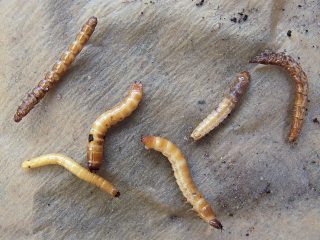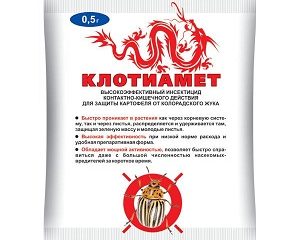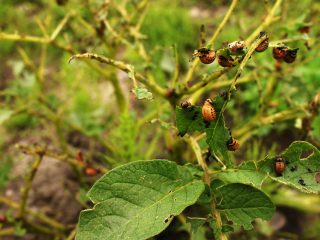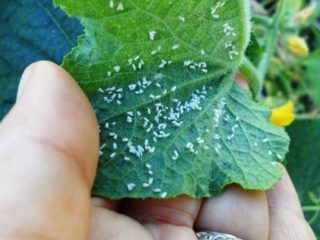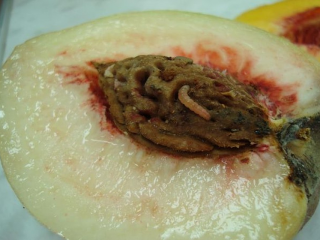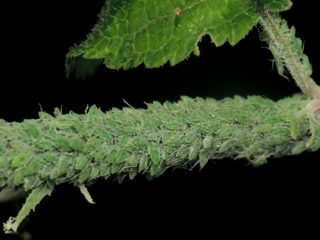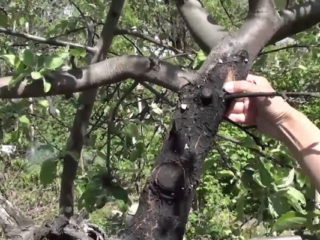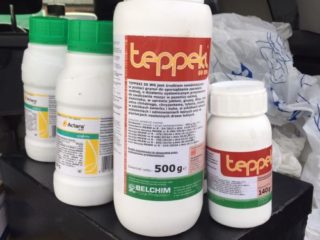Content
The appearance of pests can lead to complete loss of harvest and death of plants in the garden. Whitefly on cabbage is a real scourge for most farmers. Insect infestations spoil plantings, but if detected early, this problem can easily be neutralized.
Reasons for the appearance of whiteflies on cabbage
Insects cause enormous damage to vegetable and cultural plantings in vegetable gardens and household plots. Cabbage, potatoes and tomatoes are most susceptible to whitefly infestation. Pests settle on the inside of the leaves of the plant and parasitize, feeding on its juices. The most common reasons for the appearance of insects in cabbage beds include the following factors:
- increased temperature and humidity of the environment;
- insufficient ventilation when growing in closed greenhouses;
- low sparseness of plantings.
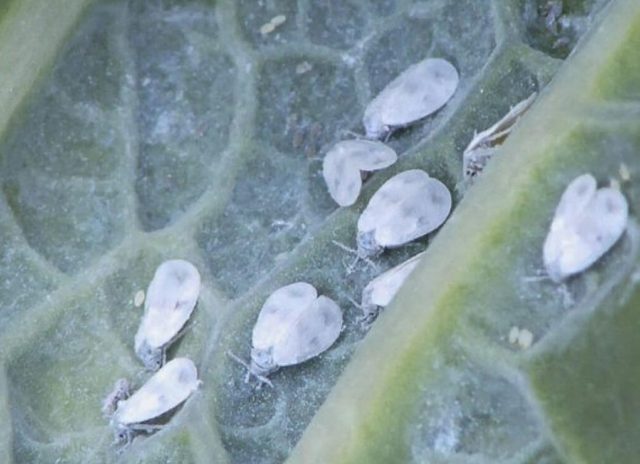
Most often, whiteflies damage the inside of cabbage leaves.
Whitefly most often appears on cabbage in greenhouses and conservatories. When planted in open ground, its vital activity is hampered by wind and larger insects. However, if the beds are heavily waterlogged and there is complete calm, an invasion of pests can be expected.
Why is whitefly on cabbage dangerous?
Having settled on the inside of cabbage leaves, the larvae begin to feed on the sap of the plant. Having lost its nutrition, the cabbage begins to dry out, gradually dying off until the plant completely dies.
When sucking plant juices, the whitefly secretes a sweet liquid. Sooty fungus very actively settles on such a substrate. With severe infection, cabbage leaves become covered with a black film, which impedes photosynthesis, worsening the vegetative potential of cultivated plantings.
Signs of whitefly on cabbage
Timely detection of pests will allow you to quickly begin active control of them, reducing the possibility of losing the future harvest. The main damage to cabbage is caused by the larvae, but they are the most difficult to detect. Small pale green worms firmly adhere to the stems and lead a sedentary lifestyle. Over time, they develop a thin waxy coating - a sure sign of their imminent transformation into butterflies.
While hatched butterflies are fairly easy to identify by their characteristic appearance, larvae are much more difficult to find.At the first signs of darkening of leaves or wilting, as well as damage to sooty fungus, it is necessary to immediately inspect the cabbage plantings for pests. Experienced farmers also advise inspecting the plantings once a week.
How to deal with whitefly on cabbage
The uncontrolled development of pests causes irreparable harm to plantings, up to and including complete destruction of the crop. The simultaneous attack of larvae and adult whiteflies on cabbage, together with sooty fungus, deprives the plant of its ability to grow normally. There are several ways to combat it, ranging from folk methods proven over decades to modern chemicals.
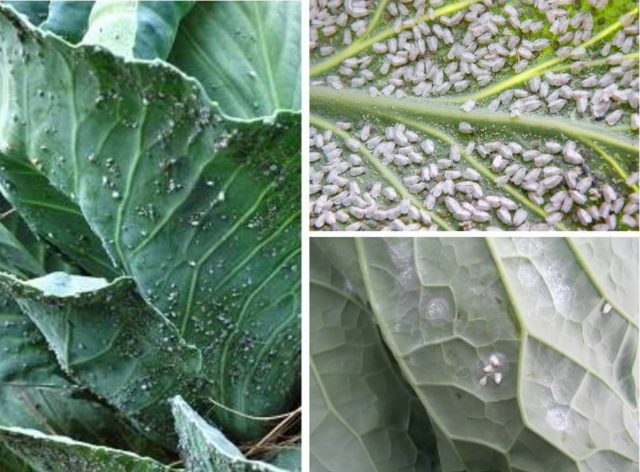
Regular inspection of cabbage leaves will help identify whiteflies as early as possible.
Completely eliminating whiteflies in cabbage beds is a rather difficult task, although quite doable. The process is most often complicated by the simultaneous presence of several generations of pests. Some drugs that kill larvae may not be useful against adults and vice versa.
Measures to combat whitefly on cabbage using folk remedies
Centuries of experience in growing cultivated plants have made it possible to develop working methods for reducing the harm of parasites and insects. The use of folk remedies to combat whitefly larvae and butterflies on cabbage allows you to effectively protect plantings, minimizing harm to the human body from excessive accumulation of insecticides. The most popular methods include spraying bushes with the following solutions:
- garlic infusion;
- tincture of yarrow;
- tobacco infusion;
- infusion of dandelion leaves and rhizomes.
One of the most effective remedies against whiteflies on cabbage is ordinary laundry soap. It is mixed with water in a ratio of 1:6. The resulting solution is sprayed onto cabbage beds every 8-10 days. More frequent processing may cause leaf burn.
Controlling whiteflies on cabbage with chemicals
Chemical exposure allows you to reduce the number of parasites to a minimum. The best drugs to protect cabbage from whiteflies are Rovikurt, Fufanol, Zeta and Karbofos. They are bred in accordance with the manufacturer's instructions and the plantings are treated. In this case, cabbage must be processed several times in order to be able to remove the pupated larvae in the next approach.
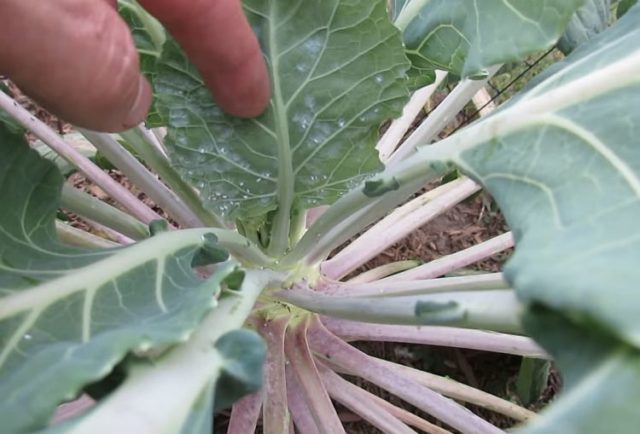
Timely application of insecticides will ensure the safety of cabbage plantings
Plantings are treated with insecticides until mid-June. Otherwise, excessive absorption of drugs and chemical compounds may occur. In later periods of the growing season, it is better to use folk remedies.
Preventing the appearance of whiteflies on cabbage
Popular wisdom says that it is much easier to prevent a disease than to fight it. Since the whitefly easily survives the winter, it begins to lay eggs quite early. This period can occur simultaneously with the cultivation and hardening of cabbage seedlings. Before planting, be sure to inspect all planting material for contamination. Other most popular preventive methods include:
- Disinfection of greenhouses in the autumn.Complete cleaning of plant debris and the application of special insect repellents completely destroy the whitefly during wintering.
- Soil disinfection in November. Removing weeds and cleaning the soil with insecticides actively helps in the fight against whiteflies.
Another preventative method of control is digging up the soil in the pre-winter period. An insect ready for winter finds itself in unfavorable conditions and instantly dies.
Advice from gardeners
During the active development of butterflies and other flying insects, it is recommended to protect windows and entrances to the greenhouse with gauze. Anti-mosquito nets can be excellent. They protect cabbage plantings in greenhouses from an abundance of flying parasites, while the windows can be open and reduce excess humidity.
Experienced farmers have long noticed that insects of this species are very fond of the color orange. By placing a small shield next to the cabbage beds and smearing something sticky on it, you can create an improvised trap. Insects will stick to its surface and die.
Conclusion
Whitefly on cabbage can be a real disaster even for experienced gardeners. Despite the large number of ways to destroy this parasite, only comprehensive control in combination with preventive methods can give 100% results. Negligence can lead to the complete destruction of crops.
